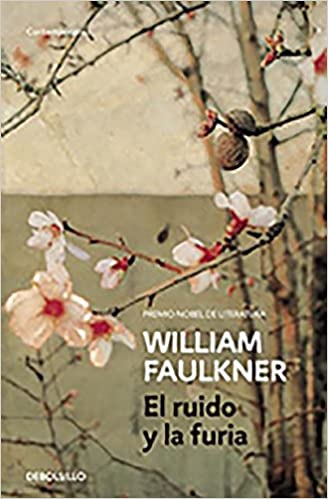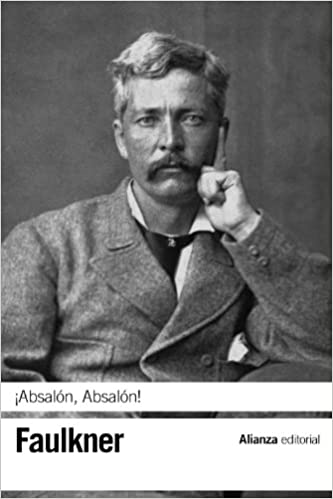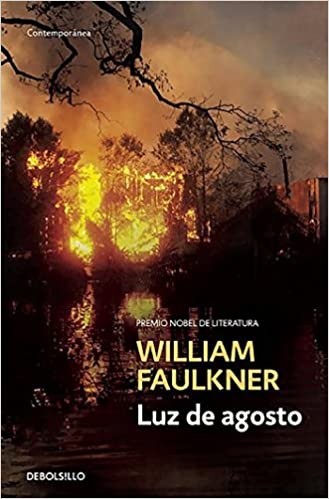The life history of self-made writers is often filled with intense life experiences. When a person decides to put all that collection of sensations, that amalgamation around the contradictions of living, black on white, he can become a writer who strikes a chord.
William Faulkner is that kind of writer. And to such an extent he came to know how to transfer his inner world to such an extent that he won the Nobel Prize in 1949 and, in his last days and even after his death, he came to live in the Olympus of the great storytellers of the XNUMXth century.
Novel builder from the inside out, from the character to his circumstances. Interior monologues towards the mimicry with the character and his world. Profiles and personalities of the most vivid characters in world literature. A delight for discerning readers.
And let's go to what it touches, to point out his best novels ...
Three Recommended Novels by Willian Faulkner
The noise and the fury
One of the most suggestive titles in universal literature. Or at least that's how it sounded to me when I had the book in my hands. I thought that the title, in its grandiloquence, could engulf the story. And although the paths are different from those imagined, it can be said that no, the story continues to live up to the title.
At the beginning of the story, this novel tells us with a certain distance about some characters that are not at all stereotypical. And yet, in the end, the comparison, in its supposed hyperbole, is overwhelmingly real, strangely coinciding with the inner world of any family and with the character dilemmas of every person.
Summary: "Life is but a shadow ... A story told by a fool, full of noise and fury, which means nothing." Macbeth, Shakespeare. The noise and the fury is a masterpiece of literature. It recounts the progressive degeneration of the Compson family, its secrets and the love and hate relationships that sustain and destroy it.
For the first time, William Faulkner introduces the inner monologue and reveals the different points of view of his characters: Benjy, mentally handicapped, castrated by his own relatives; Quentin, possessed by an incestuous love and unable to control jealousy, and Jason, a monster of evil and sadism.
The book closes with an appendix that will reveal to the reader the ins and outs of this family saga from Jefferson, Mississippi, connecting it with other characters from Yoknapatawpha, a territory created by Faulkner as the framework for many of his novels.
Absalom, absalom!
Few second parts come close to the greatness of its original ones. Without clearly being a continuation of The noise and the fury, this novel starts from one of the characters of the aforementioned.
Summary: Quentin Compson scion of the lineage whose downfall is described in "The Sound and the Fury" recreates, with the help of his Harvard roommate, Thomas Stupen's stubborn efforts to rule a large plantation and found a dynasty. Destruction and failure are the final conclusion to a story of violence, pride, incest, and crime.
In a letter addressed to Harrison Smith - the 1929 editor of The Noise and Fury - dated a Thursday in August 1934, is where we began to have the first news of this novel: «… I have a title for her that I like, Incidentally, Absalom, Absalom !: the story of a man who wanted to have a child by dint of pride, who had too many, and whom his children destroyed.
This germ of his work was finished by Faulkner in Mississippi on January 31, 1936. "It is a tortured history and a torture to write it" would blurt out to his editor and friend Ben Cerf. Faulkner kept thinking about the novel even after it was finished. He wrote an orderly chronology. The genealogy included seventeen characters and I would go back to it to add more details by hand.
Then he incorporated a map of Yoknapatawpha County and drew Tallahatchie to the north and Yoknapatawpha to the south, vertically bisecting the county with John Sartoris's railroad… He carefully identified twenty-seven locations. He included the size of the county and its population, and then wrote: "William Faulkner, sole proprietor and owner."
Fourteen years later, in 1950, the award of the Nobel Prize in Literature confirmed that Faulkner was, is and will continue to be one of the Masters of Universal Literature, a model for generations of writers and readers around the world.
Light of august
Many Faulkner readers report that unfathomable tempo that moves the plot forward from the depths of each character as a great narrative virtue.
Recreations of historical moments as authentic everyday scenarios that can be visited by the reader. Reading tourism to the souls of characters who open themselves to the world, to what happens, to what it means for human beings to live in each moment.
Summary: Some of Faulkner's most memorable characters are portrayed in Luz de Agosto: the naive and intrepid Lena Grove in search of the father of her unborn child; the Reverend Gal Hightower - haunted by constant visions of Confederate cavalrymen - and Joe Christmas, a mysterious vagabond consumed by the racial origins of his ancestors.
Faulkner, in addition to having been the innovator of a way of narrating that has had a powerful influence on the generations that have followed him, was the chronicler of the most notable events, customs and characters of his land.
Luz de Agosto is one of the most representative works of a man who, working on history and making the imagination run wild, managed to become one of the most important writers of this century.



